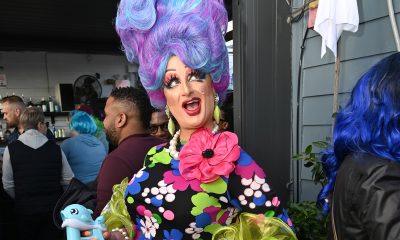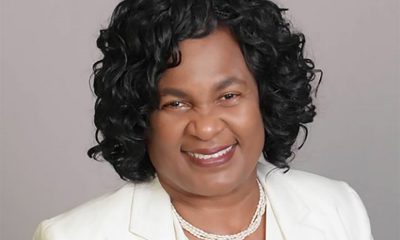Arts & Entertainment
I will survive
New documentary uses archival video footage to explore early days of AIDS
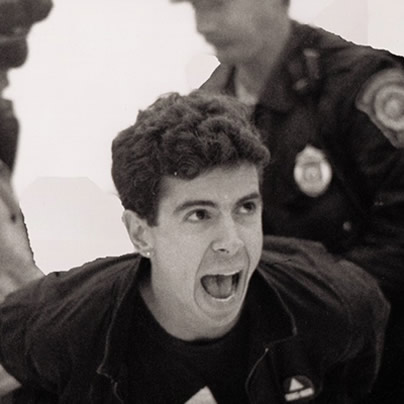
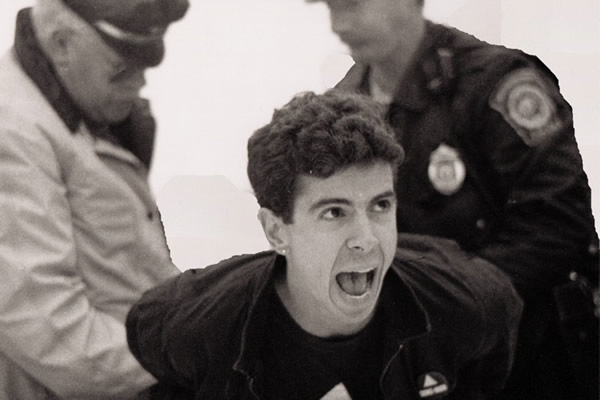
Peter Staley in a scene from ‘How to Survive a Plague.’ (photo by William Lucas Walker courtesy Sundance Selects)
As a journalist, openly gay writer David France is pretty fearless. The award-winning author has tackled such topics as the AIDS crisis, sexual abuse in the Catholic Church, the coming-out of former New Jersey governor James McGreevey and the brutal murder of Private Barry Winchell.
But, when he was poised to make the leap to documentary filmmaker, there was one thing that terrified him — the soundtrack.
“That aspect of film-making was nerve-wracking,” he says. “I couldn’t sleep. I write in total silence. I don’t play any music at all. Print journalists don’t have to deal with music. There has never been any musical accompaniment to anything I have done before.”
Luckily, he found great partners to help him develop the soundtrack of his first film, the documentary “How to Survive a Plague,” which chronicles the early years of AIDS activism. He turned to the Red Hot Organization, a non-profit musical production company that raises money to support the fight against HIV/AIDS. They suggested he listen the work of Arthur Russell, an avant garde gay songwriter and performer who was living in downtown Manhattan during the time frame covered by the film who died of AIDS-related causes in 1992.
France says that the suggestion was “an inspired proposal.” Paul Heck, executive director at Red Hot, describes Russell’s work as “captivating, personal and profoundly beautiful music that is accessible yet complex all at once.” Heck introduced France to composers Stuart Bogie and Luke O’Malley who began work on the score based on Russell’s music. At first, the collaboration was a challenge for France, who says, “I didn’t have the words to talk about the music.” Luckily, he learned to trust his instincts.
“I just started talking about how it felt, and that’s how we worked out the score.”
The narrative and visual aspects of documentary filmmaking came more easily to the novice director.
“I’ve always been a long-form journalist, so I’ve always been a storyteller. I decided to undertake a major project and look at the early days of AIDS activism, to try and make sense of what happened. What more could time tell us about those early days?”
He knew the New York Public Library had an extensive collection of amateur and professional movies made by AIDS activists during that period, so he dove in.
“I immediately jumped to the footage. I got captivated by how immediate and intensely personal and up-close it was. It reminded me how we felt in those early days.”
In the end, France and his team assembled several hundred hours of footage and began editing the material into a feature-length documentary. Aside from a few filmed interviews, this remarkable and powerful film consists entirely of this archival material, primary historical documentation captured by a then-emerging technology: the video camera.
“How to Survive A Plague” uses this riveting archival material, largely shot by the activists themselves at meetings and protests around the country, to tell the story of ACT-UP (the AIDS Coalition to Unleash Power) and TAG (the Treatment Action Group). As Franco points out, these direct-action groups saved millions of lives by battling hatred, ignorance, complacency and apathy in the face of the emerging plague.
Ultimately they changed the way health care is delivered in this country. By demanding attention, they achieved incredible things.
“The biggest thing is why not ask for the moon? Why not ask for it all? That’s what they did. There was not a single pill and they demanded a cure. Science was not even thinking like that. As total outsiders to that process, they were able to develop an agenda that everyone felt was out of reach and they were able to get close. We don’t have a cure yet, but we’re much closer than we would have been.”
France feels this kind of broad vision is missing from the LGBT movement today.
“We’ve overly narrowed our agenda for the community. Now it’s marriage. There is so much more we could be advocating for more, including a push to combat HIV. There are still high transmission rates for men who have sex with men and the national LGBT groups are not paying attention to that.”
“How to Survive A Plague” opens Oct. 12 at Landmark Theatres in the D.C. area.
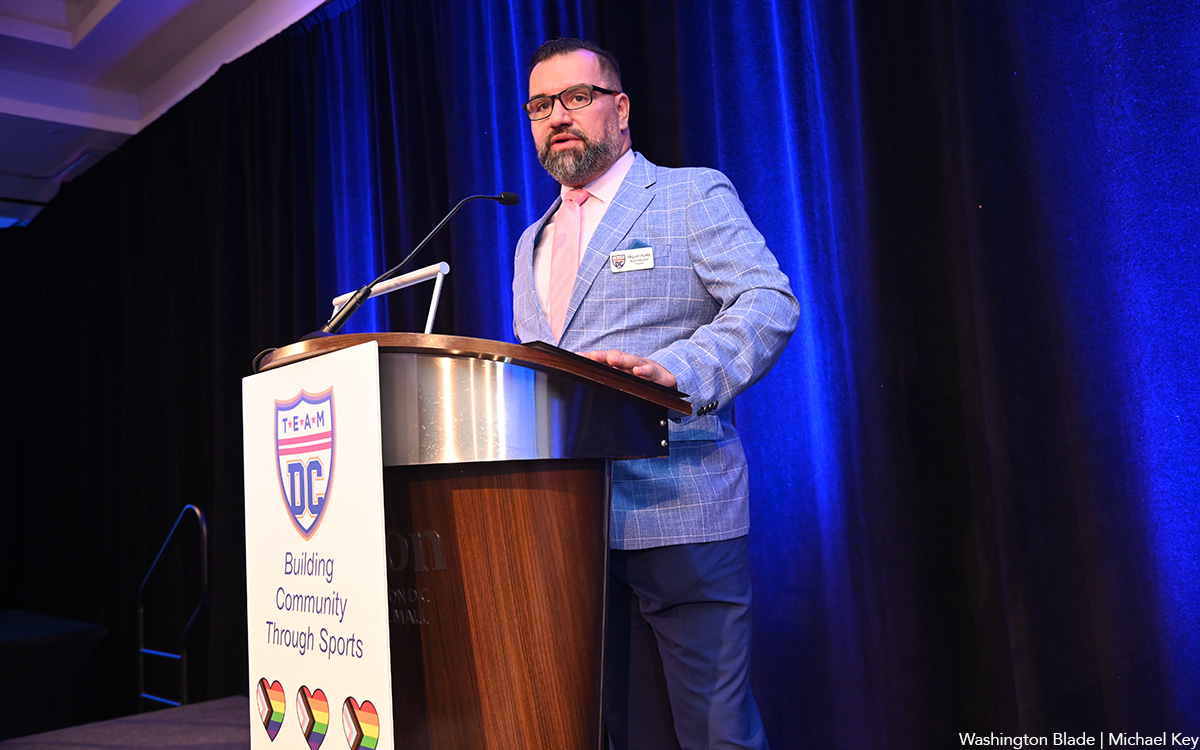
Team DC, the umbrella organization for LGBTQ-friendly sports teams and leagues in the D.C. area, held its annual Night of Champions Awards Gala on Saturday, April 20 at the Hilton National Mall. The organization gave out scholarships to area LGBTQ student athletes as well as awards to the Different Drummers, Kelly Laczko of Duplex Diner, Stacy Smith of the Edmund Burke School, Bryan Frank of Triout, JC Adams of DCG Basketball and the DC Gay Flag Football League.
(Washington Blade photos by Michael Key)
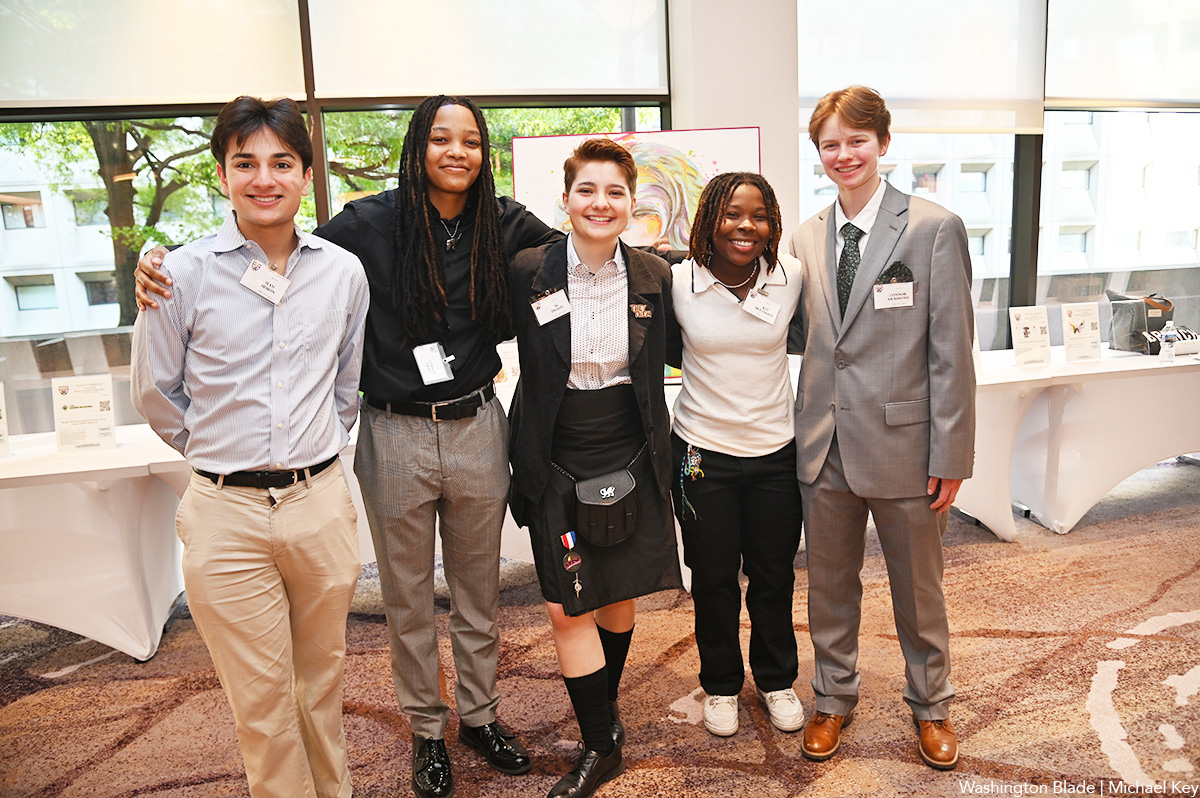
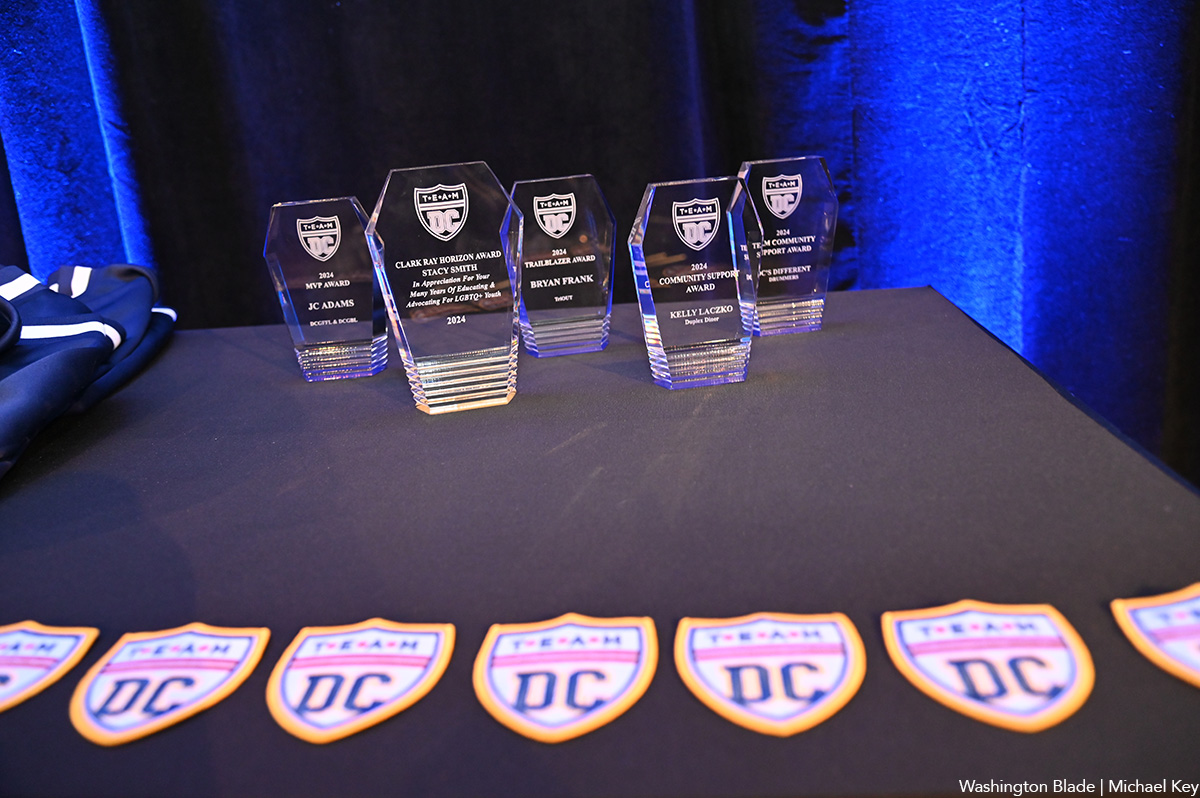
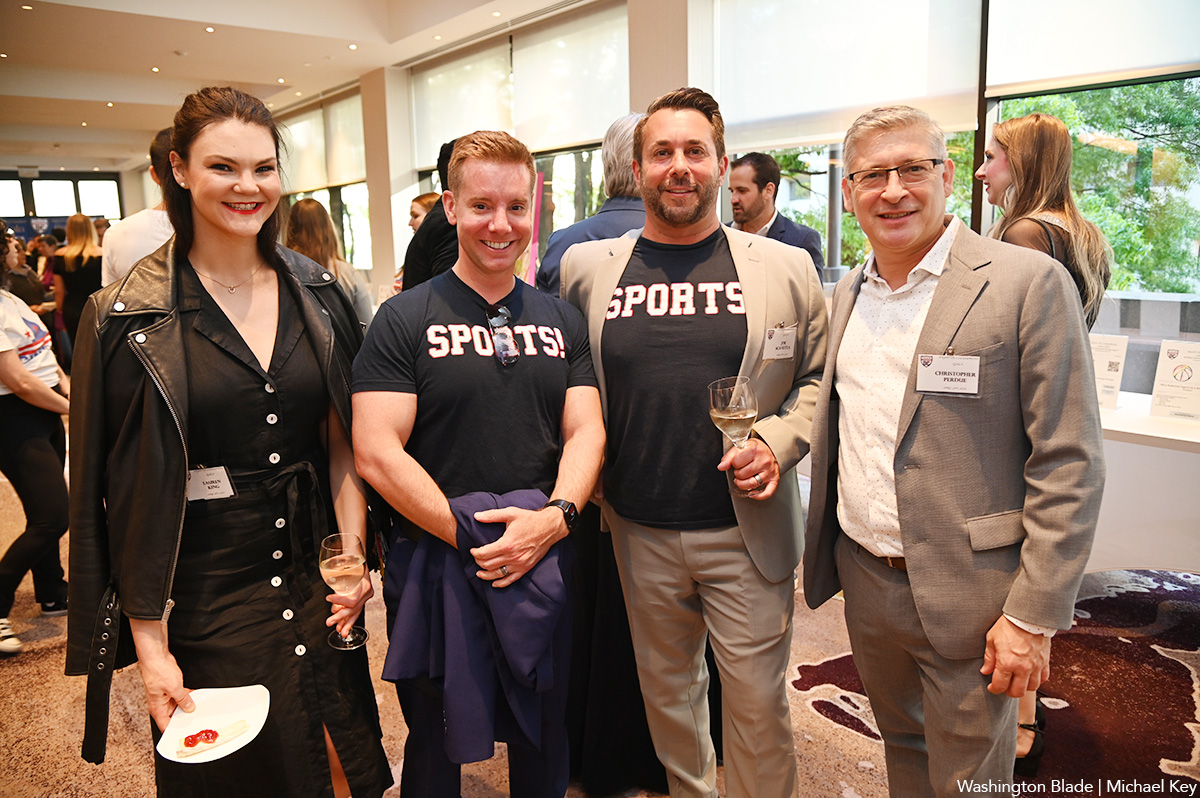
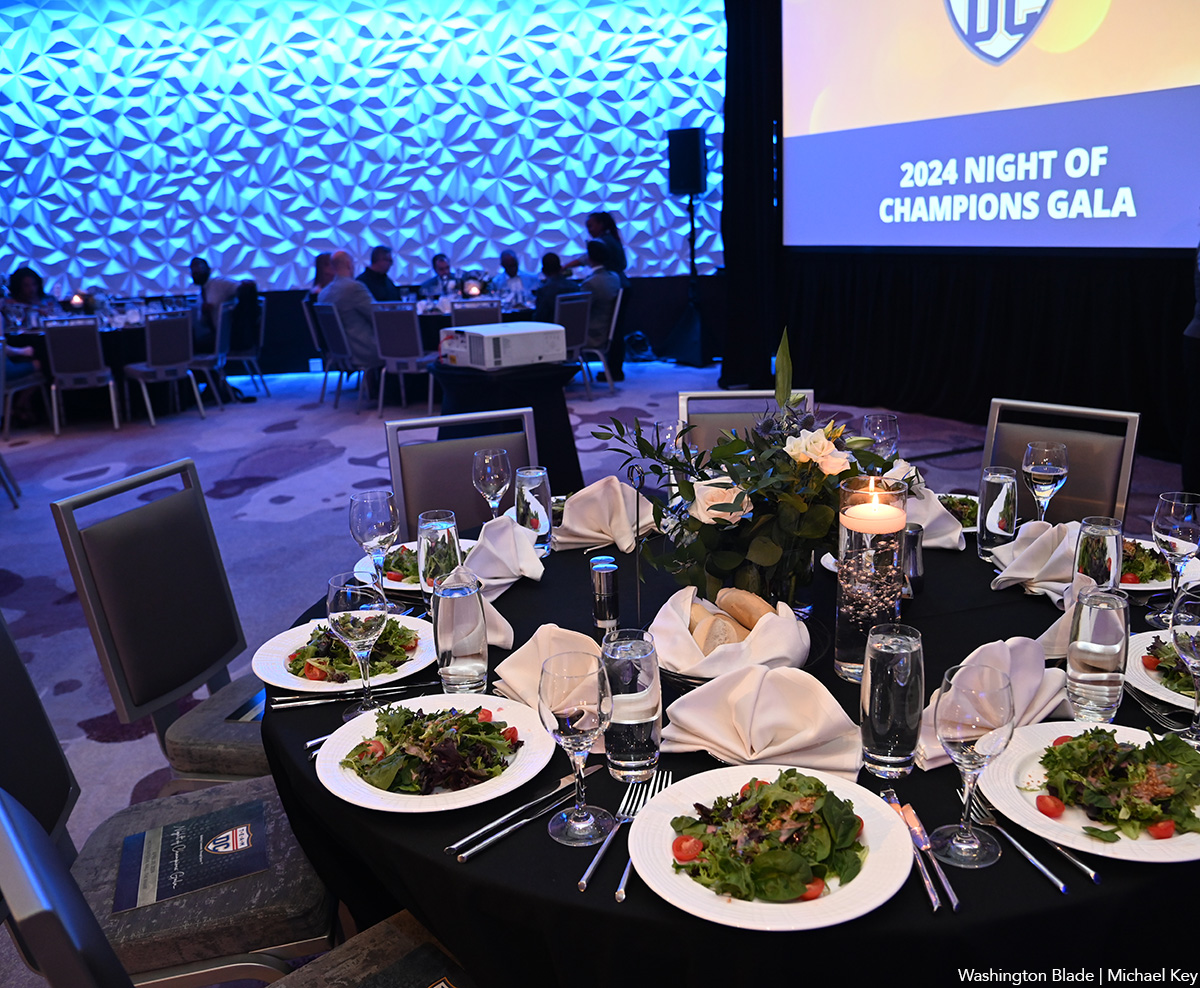
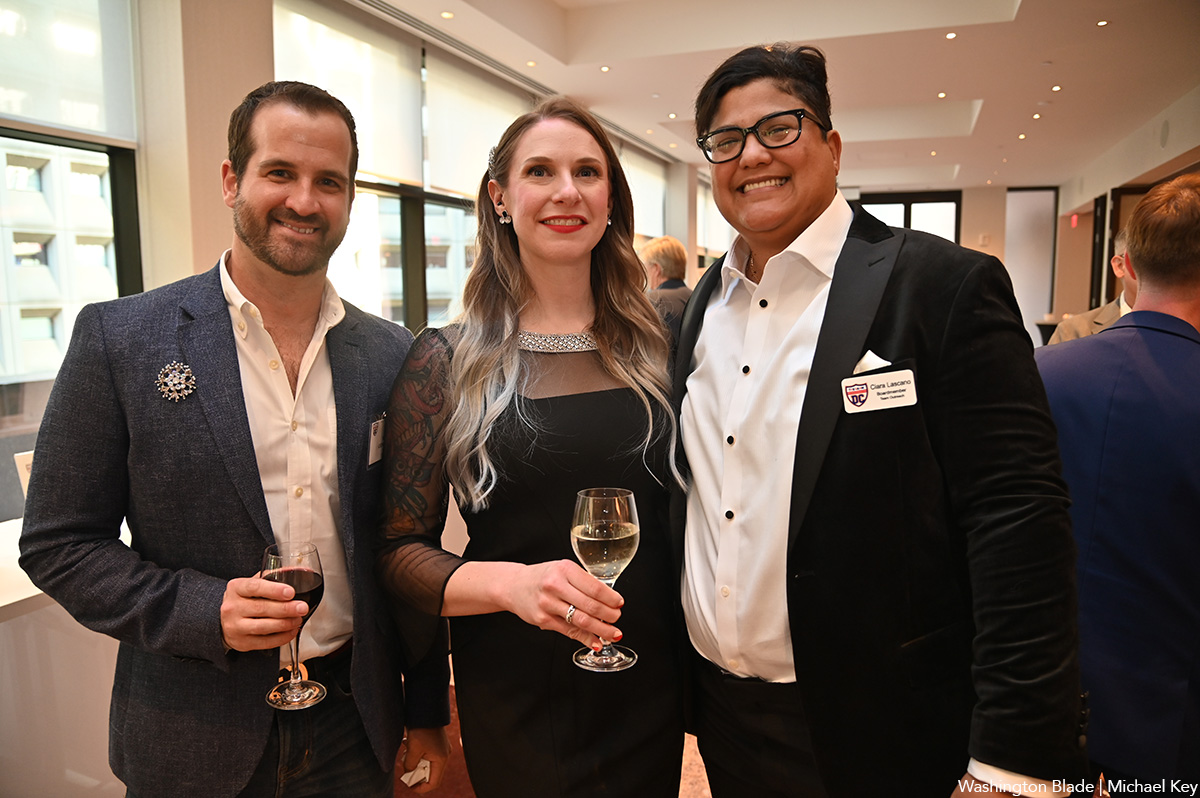
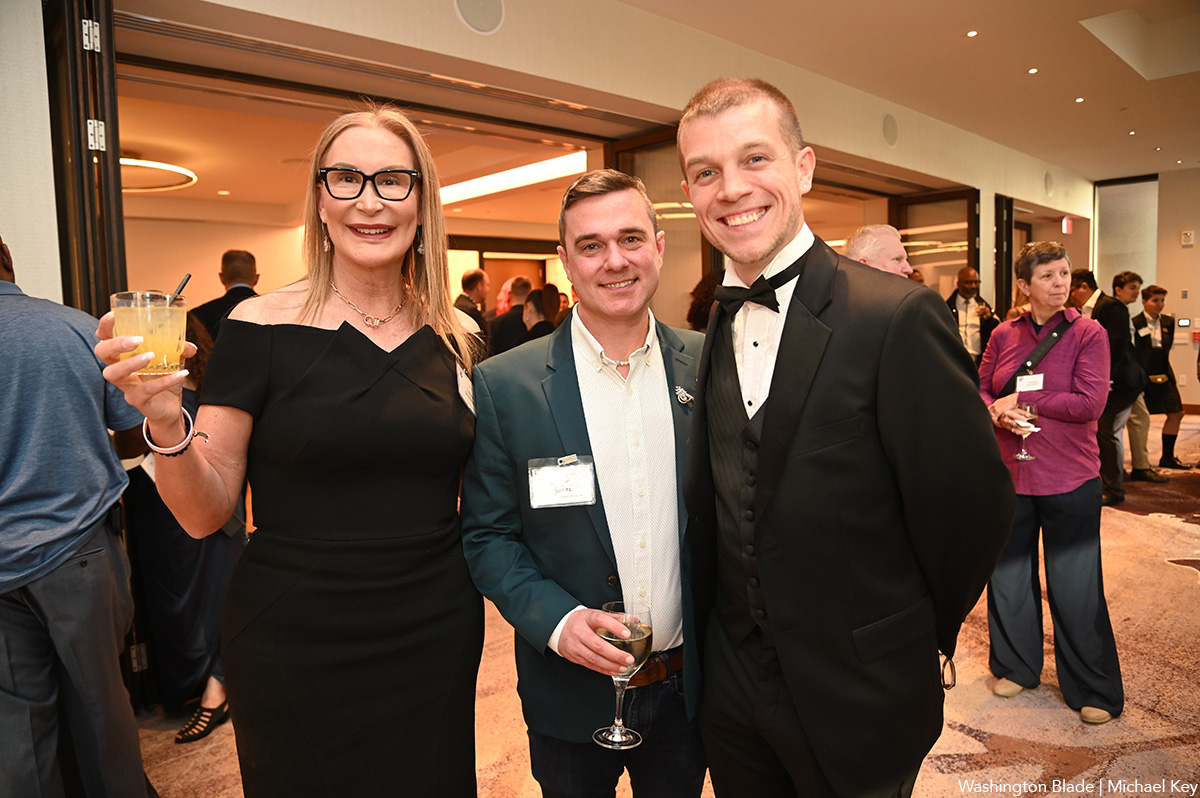
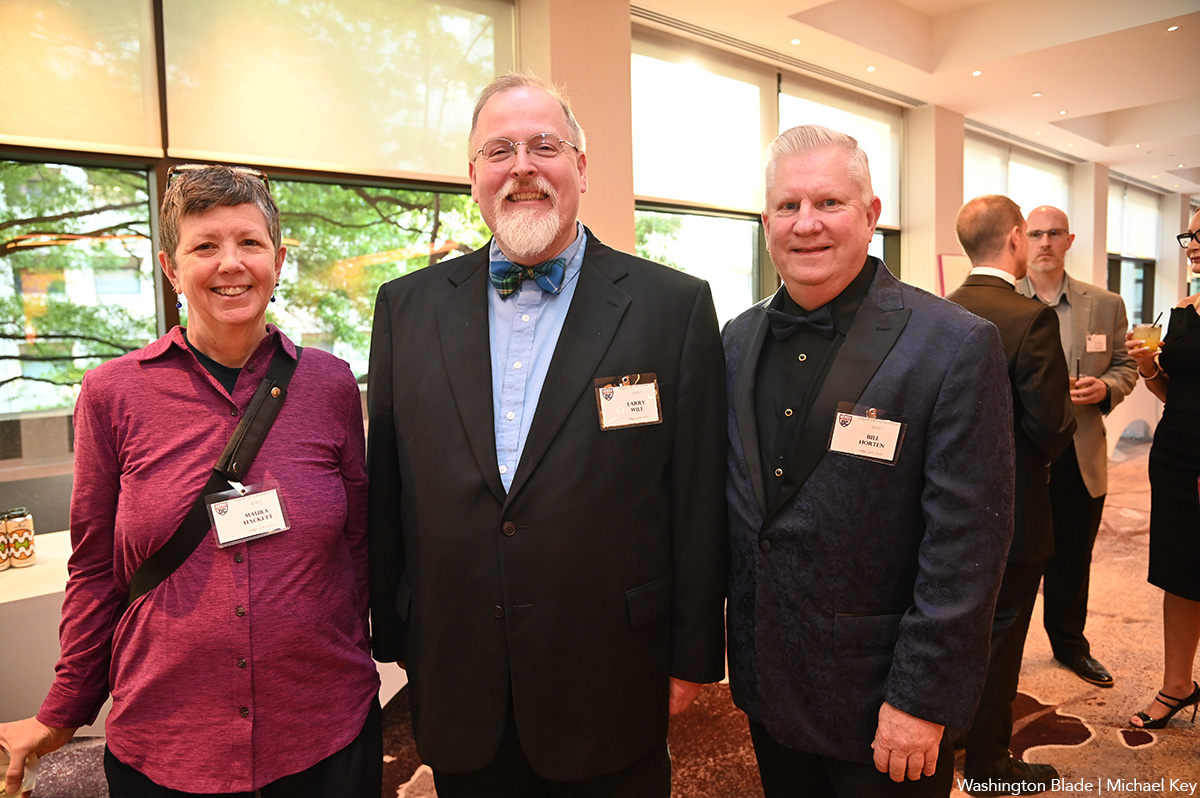
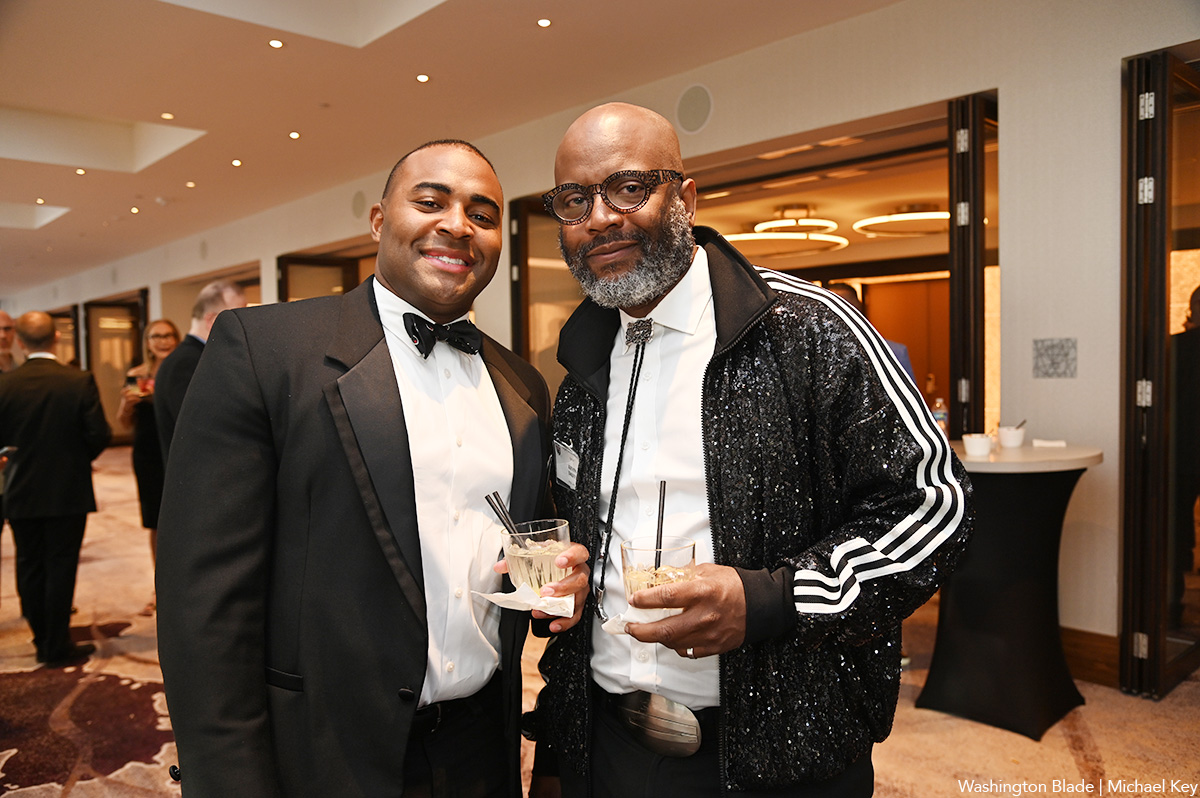
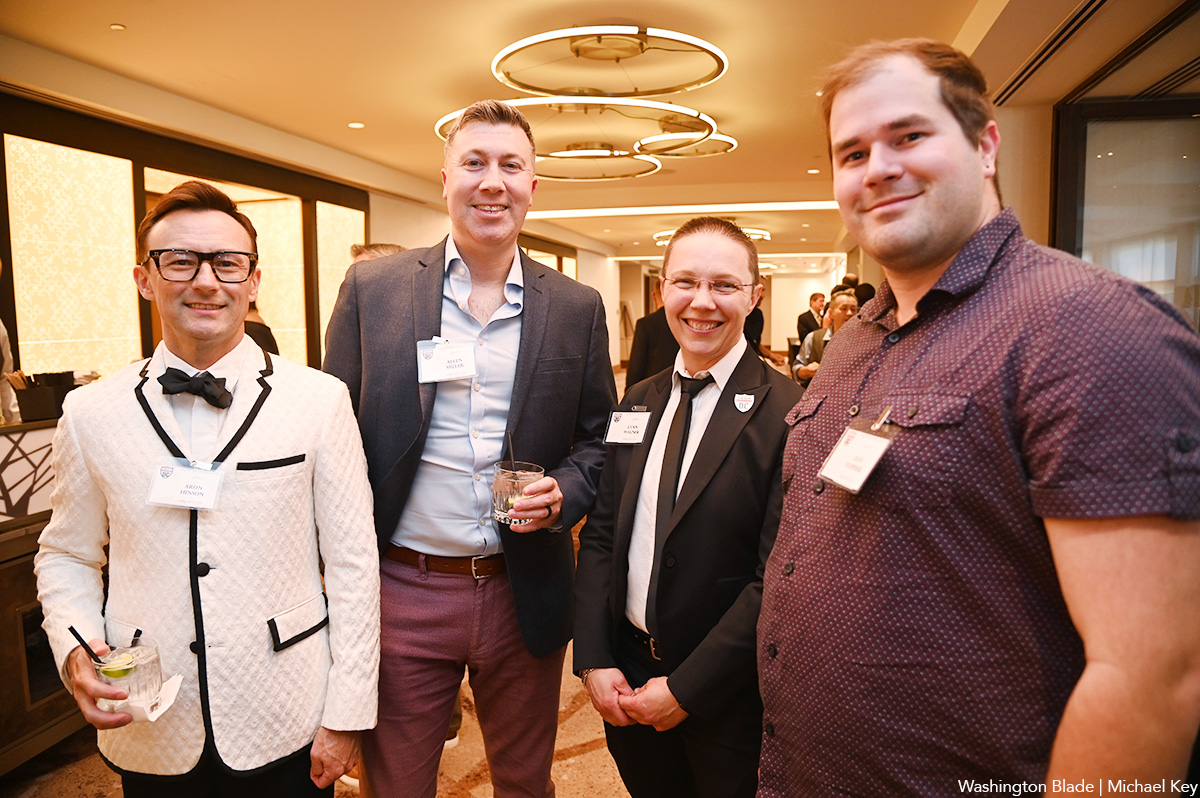
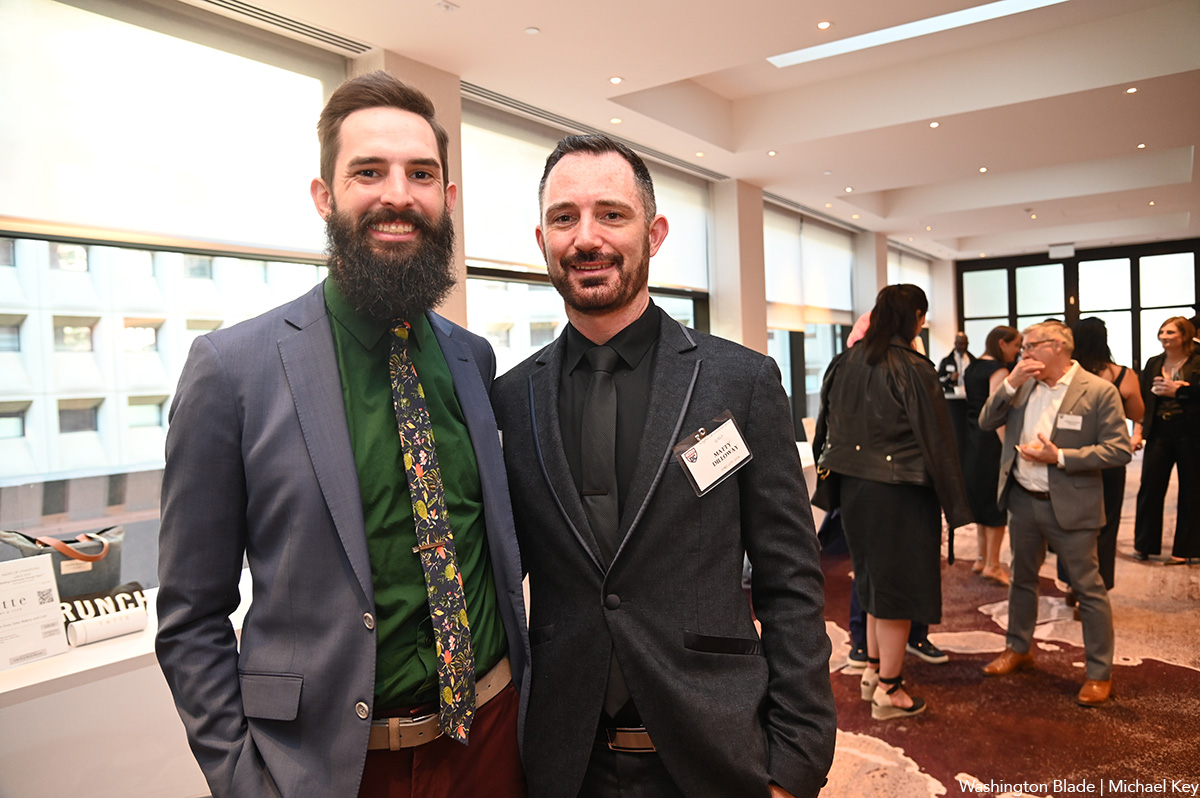
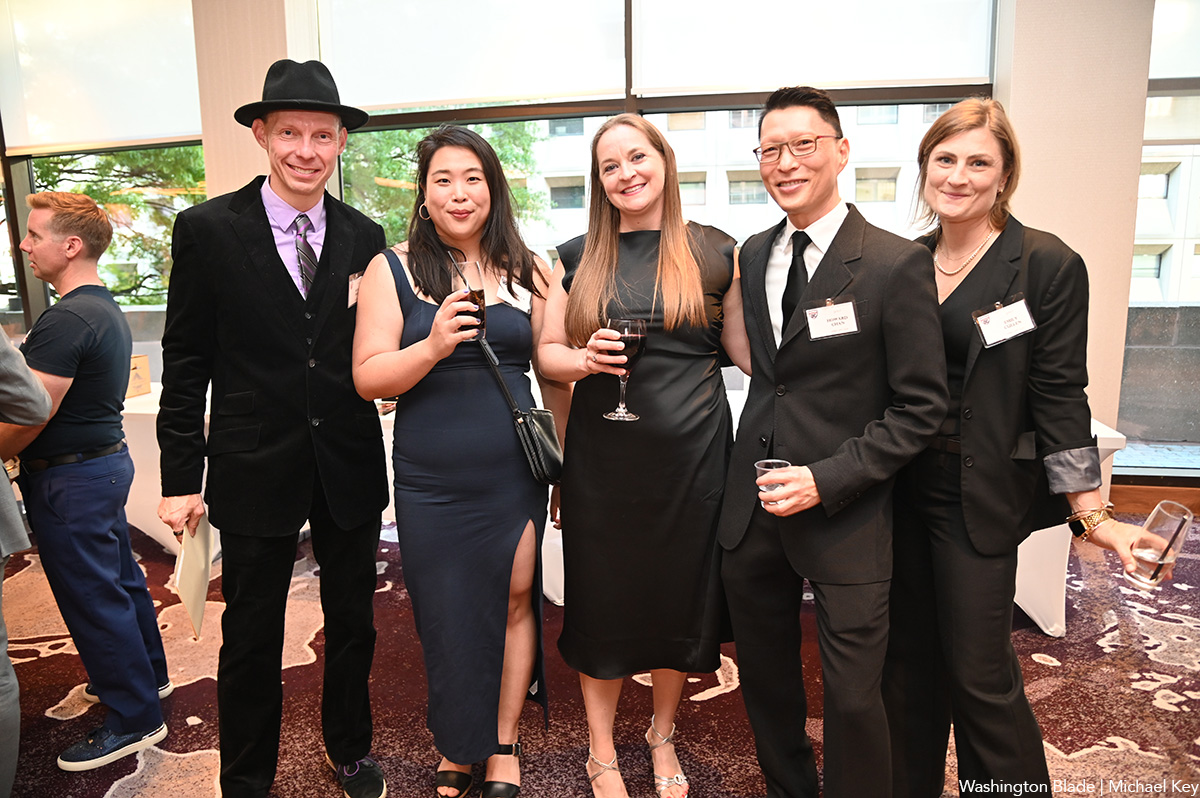
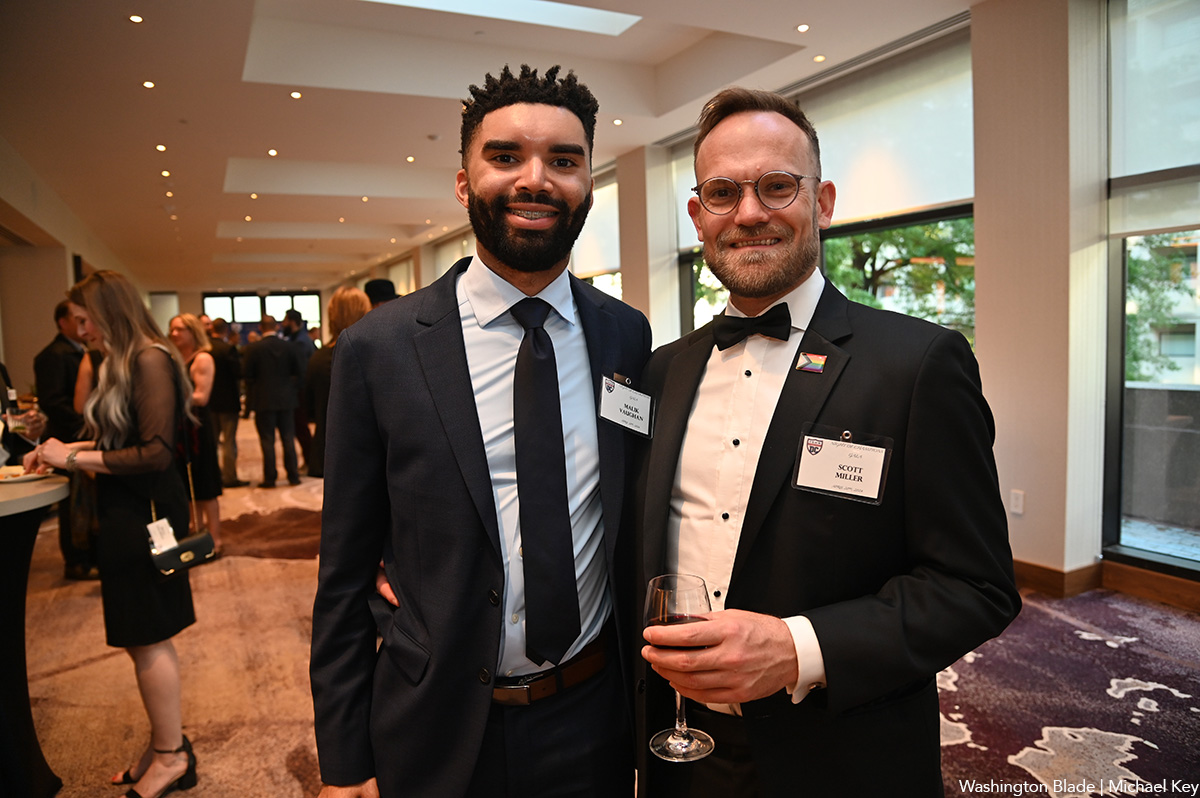
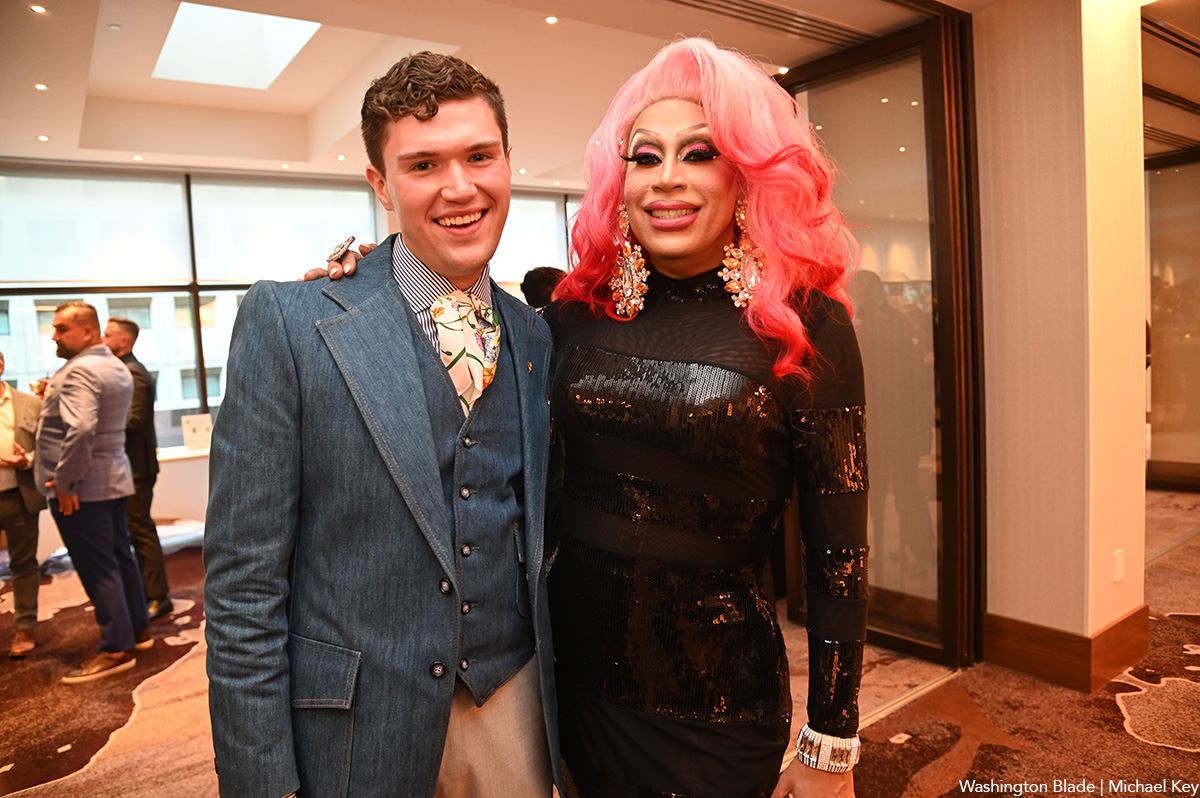
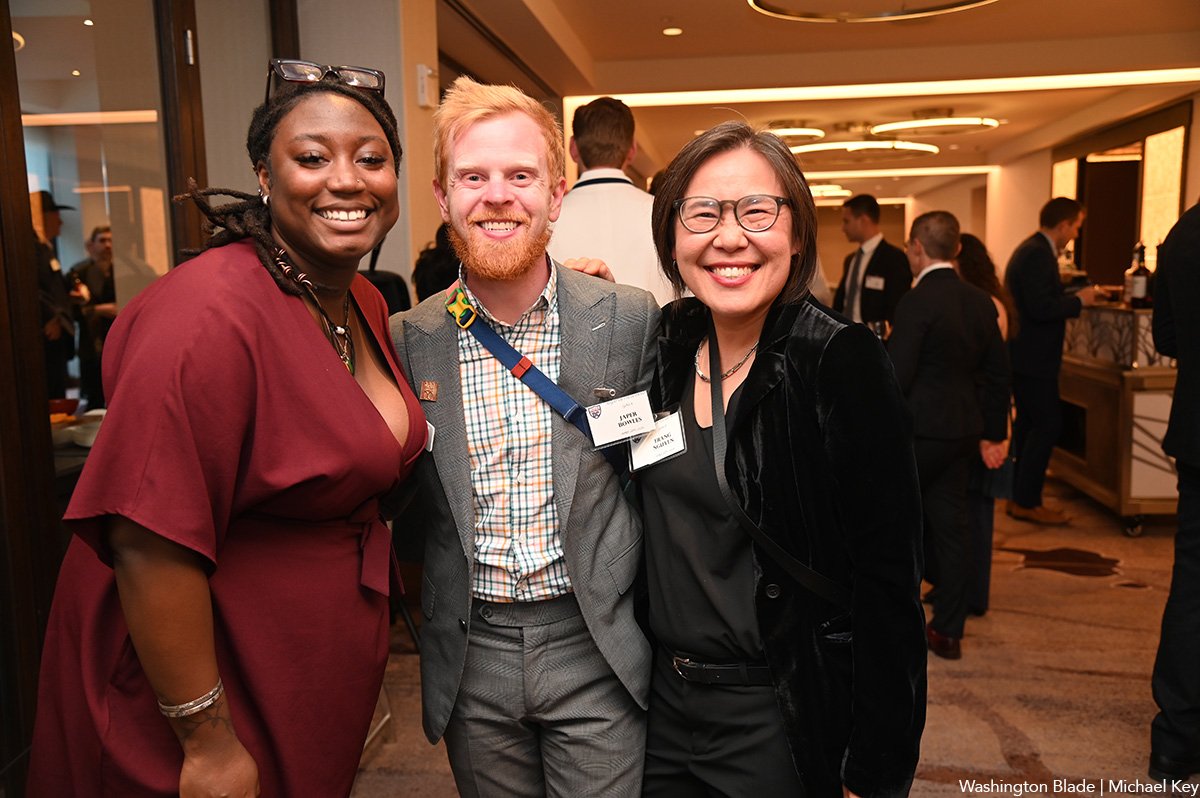
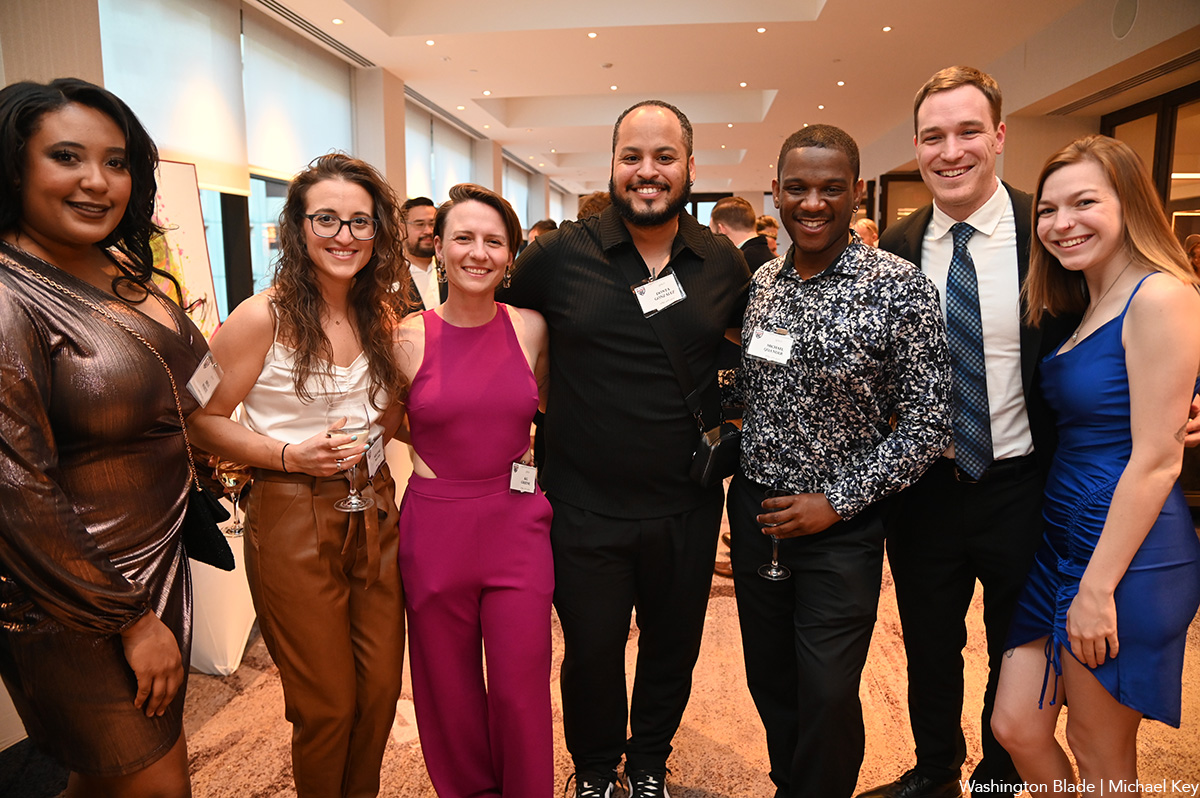
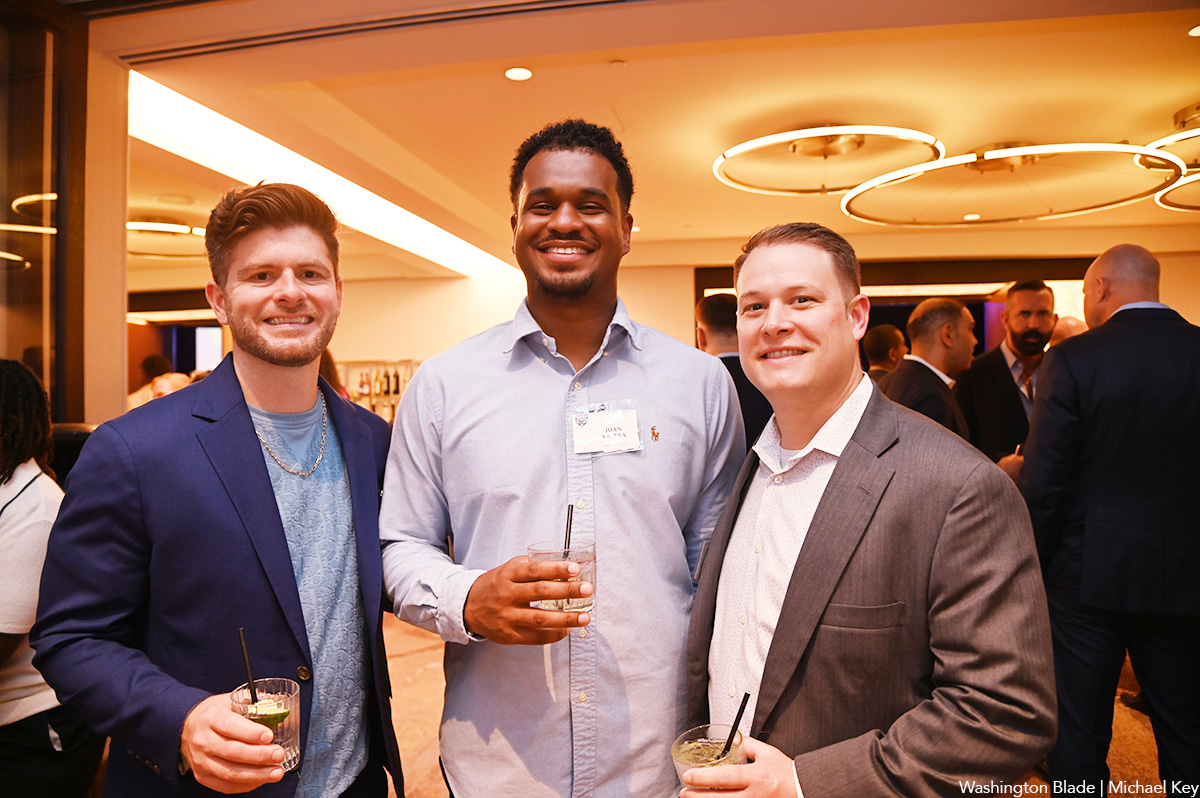
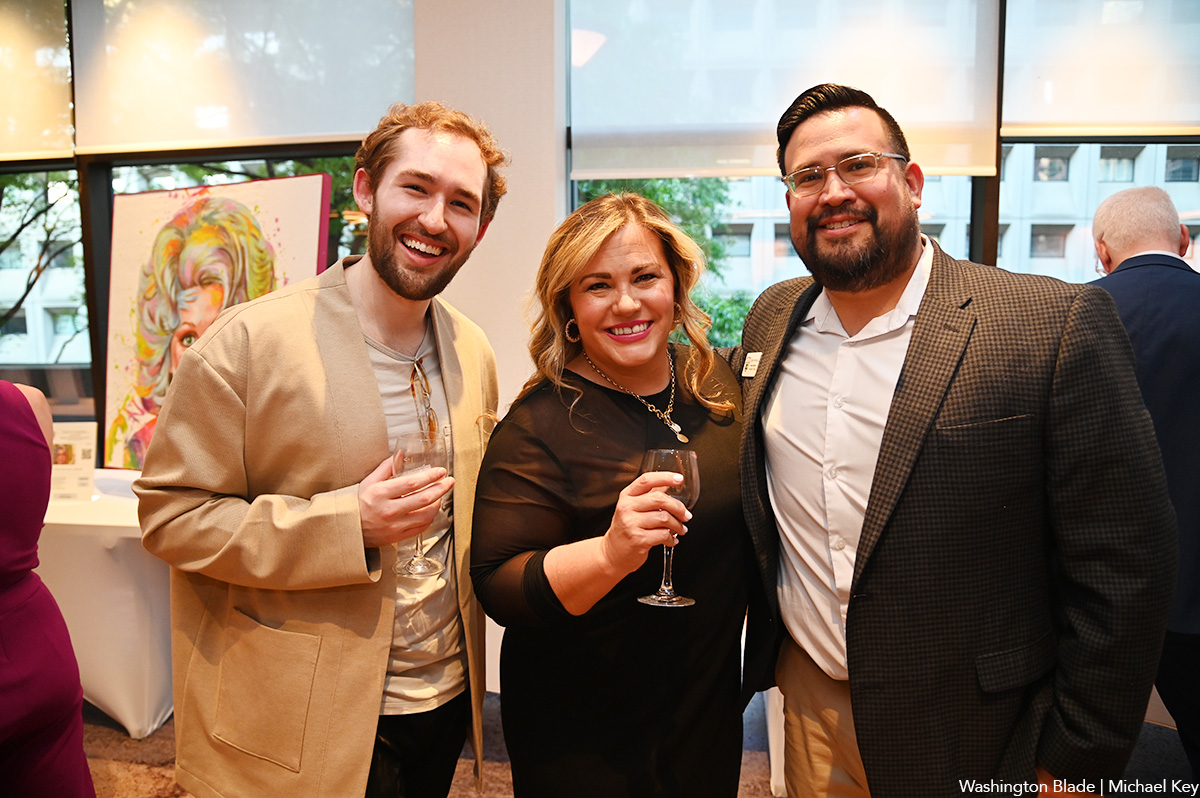
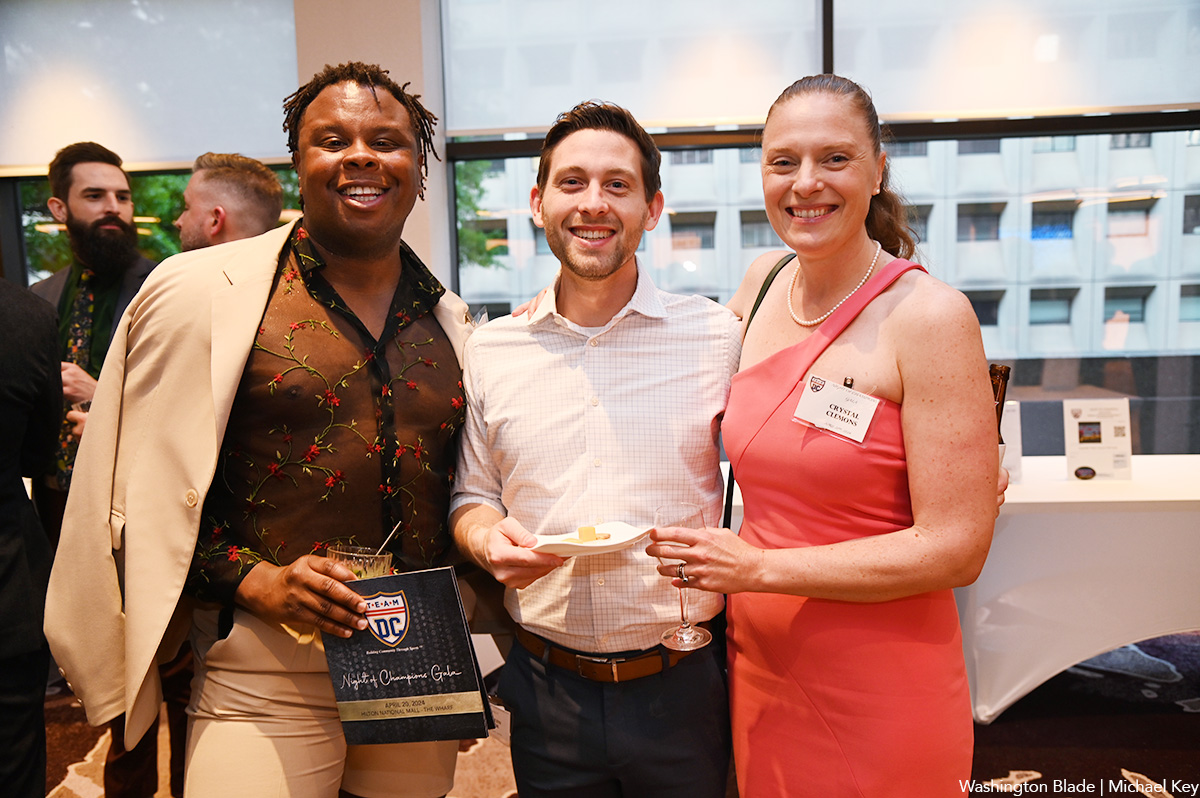
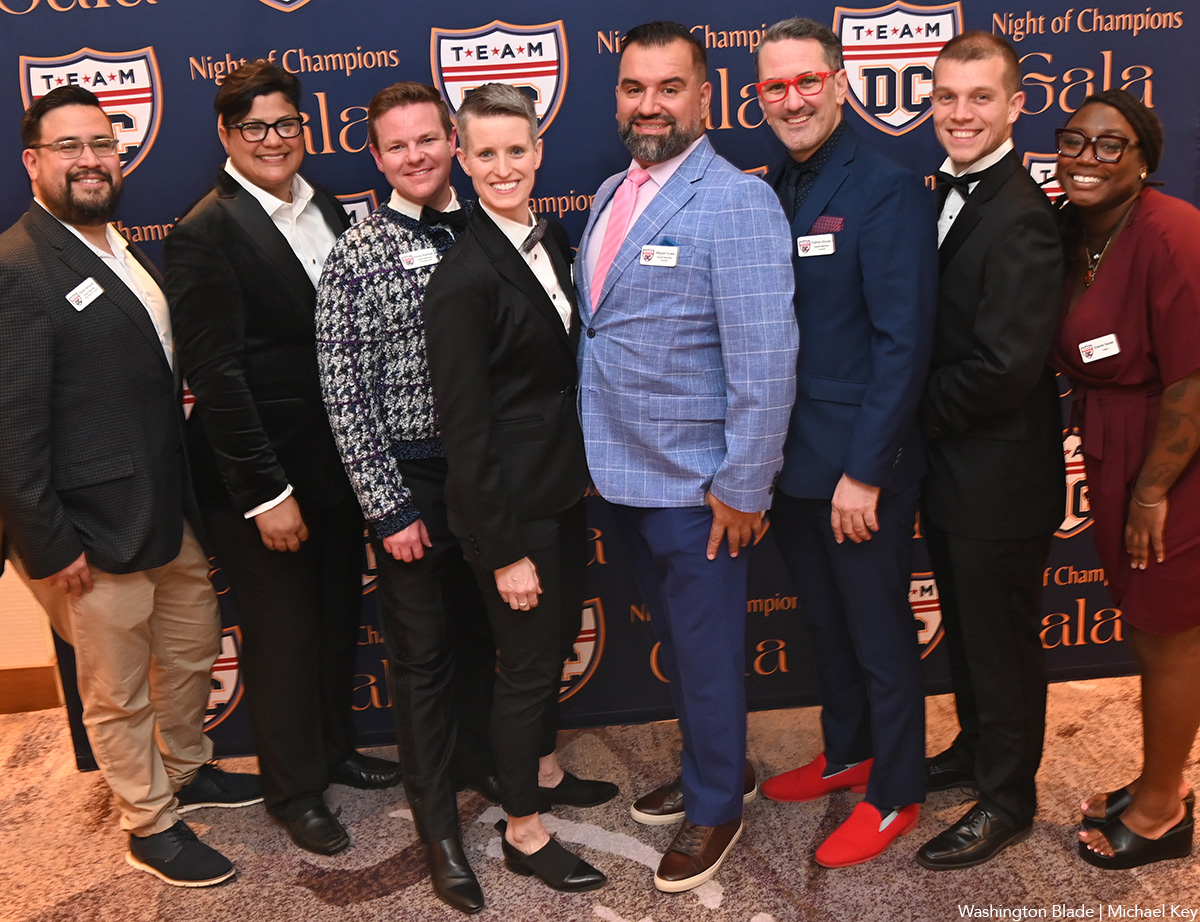

The 2024 National Cannabis Festival was held at the Fields at RFK Stadium on April 19-20.
(Washington Blade photos by Michael Key)
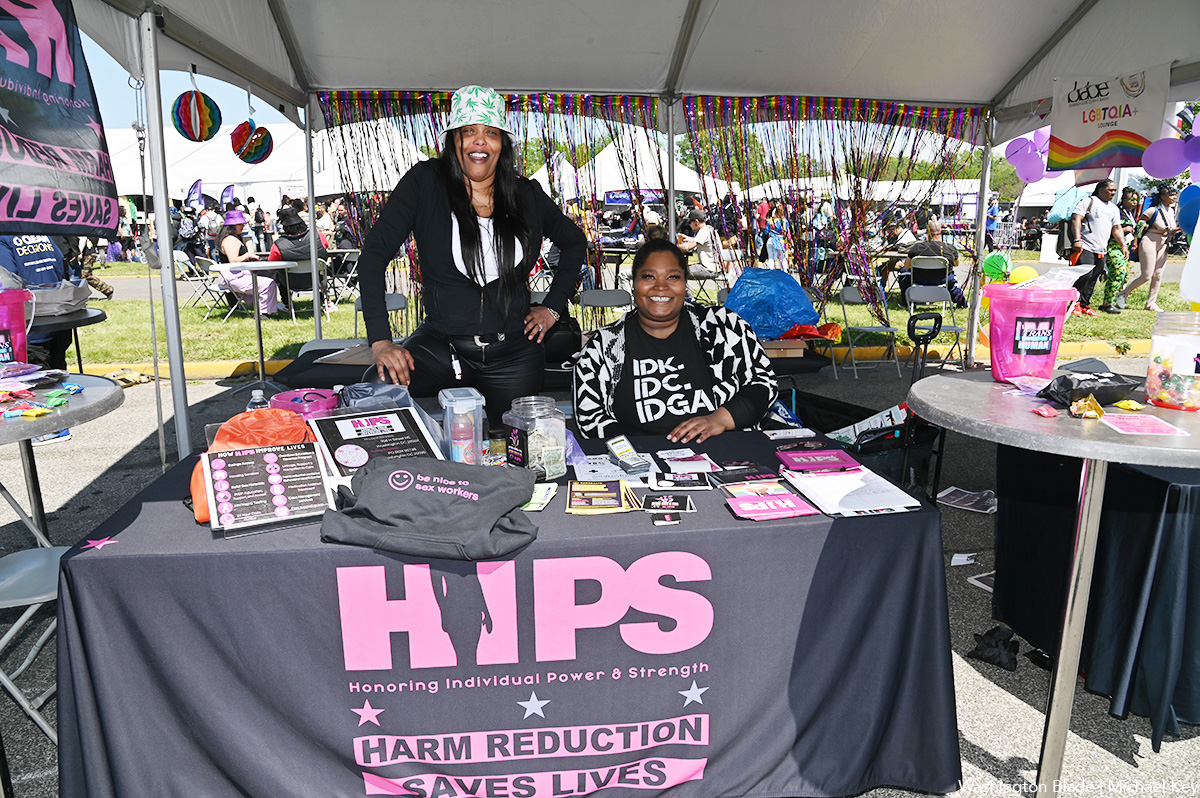
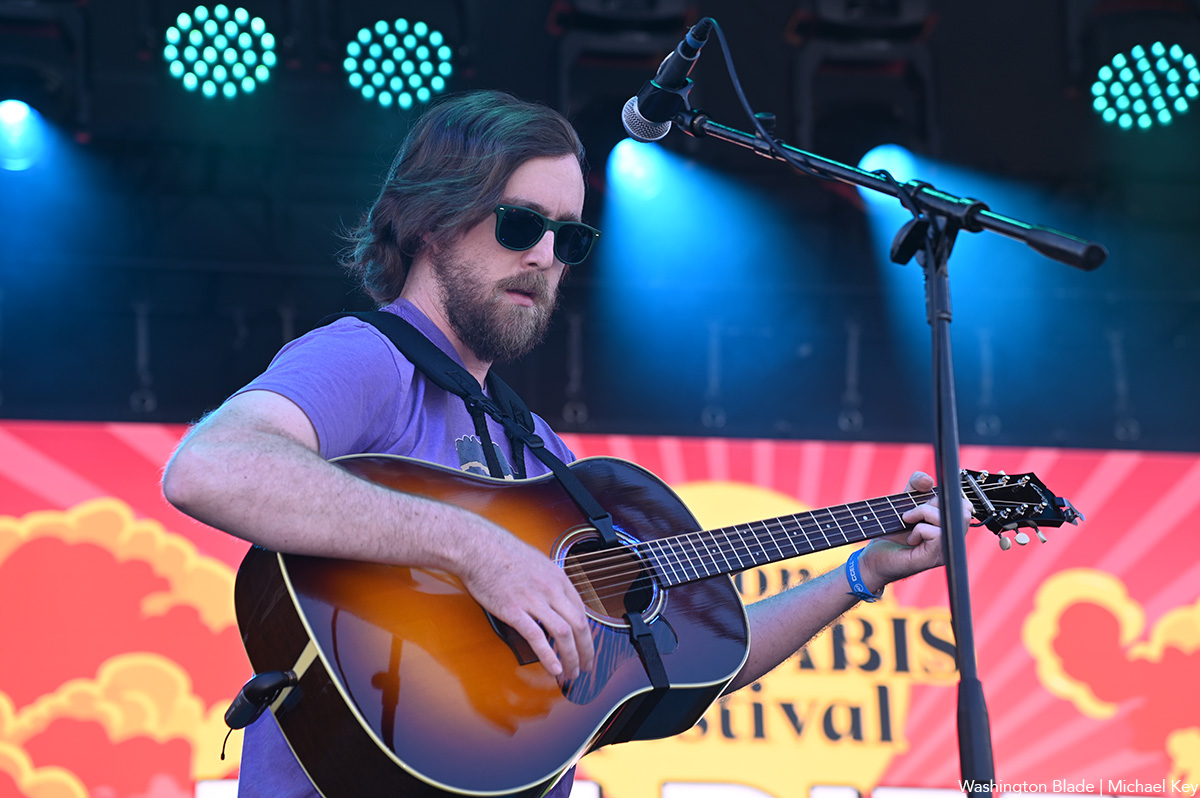
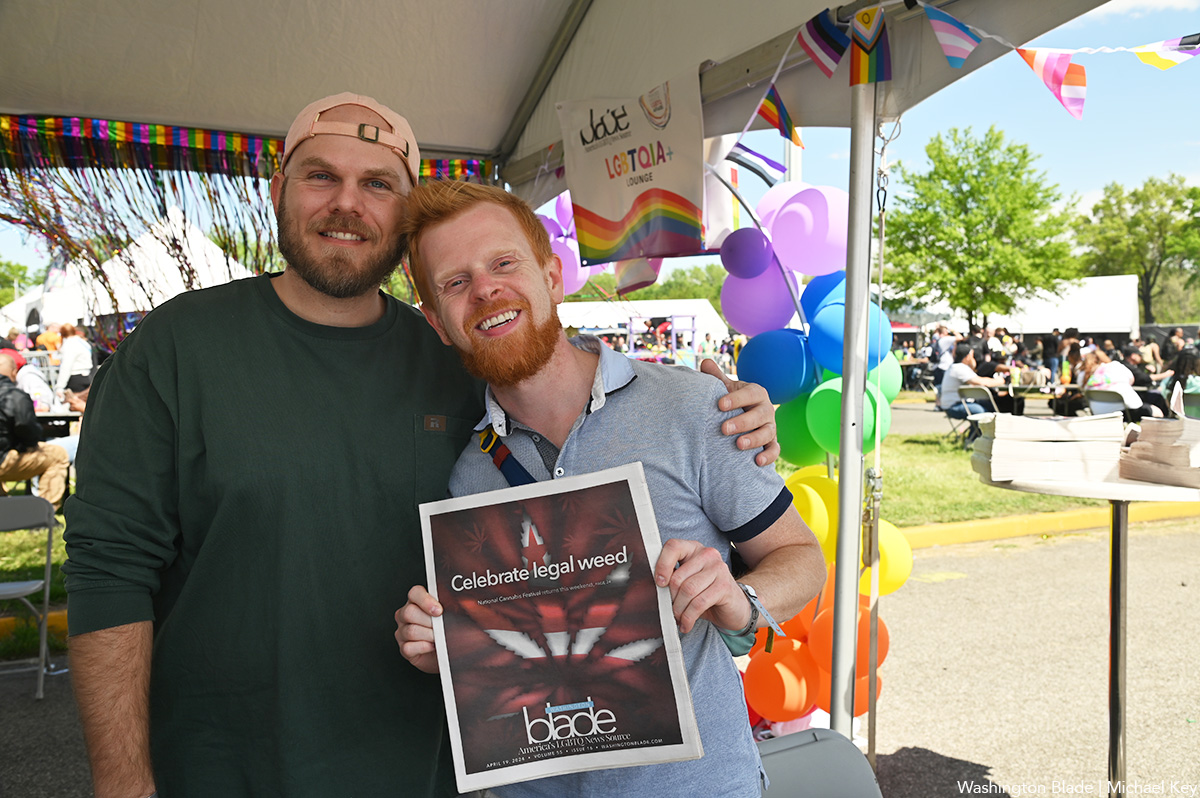
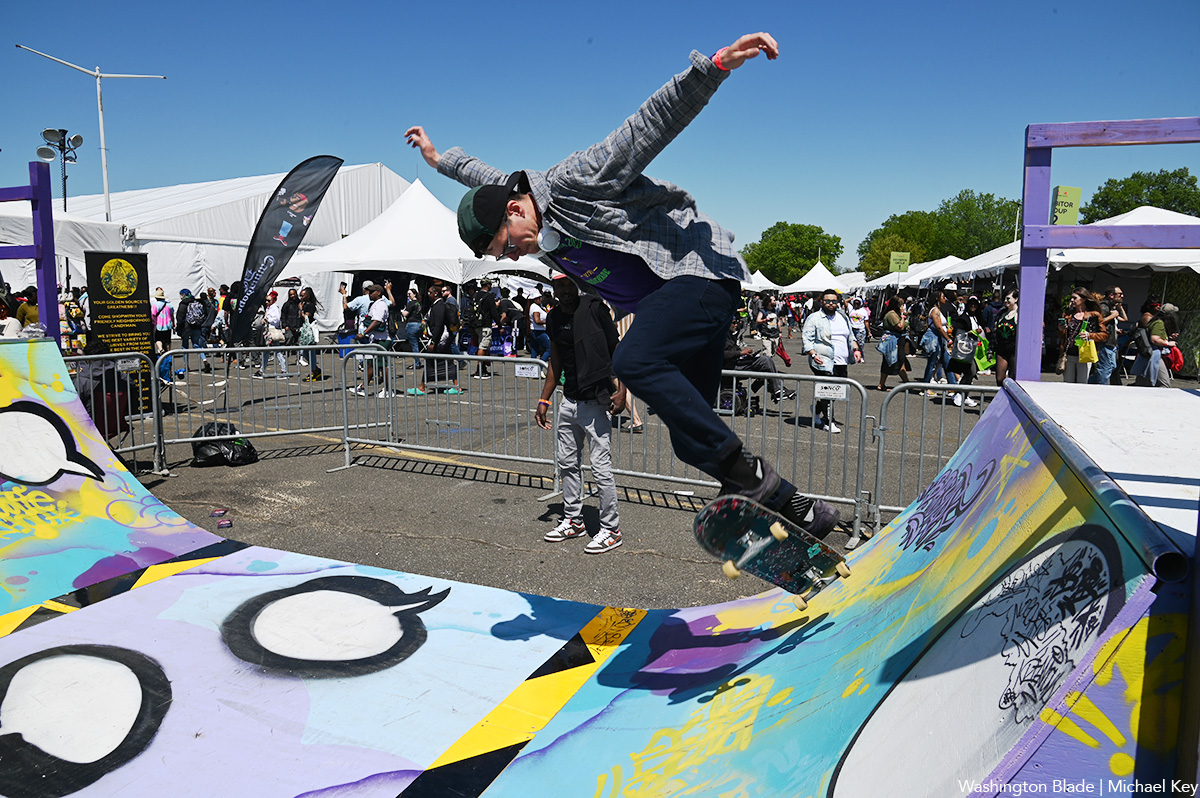


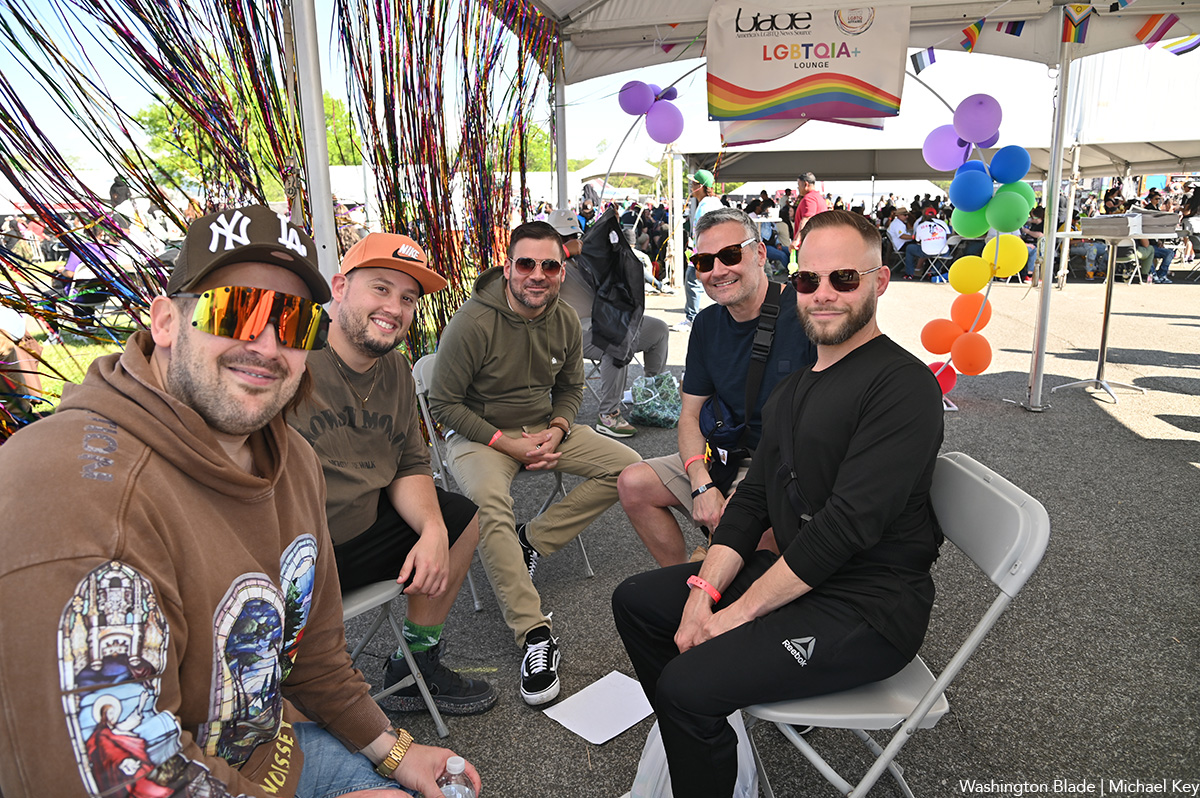
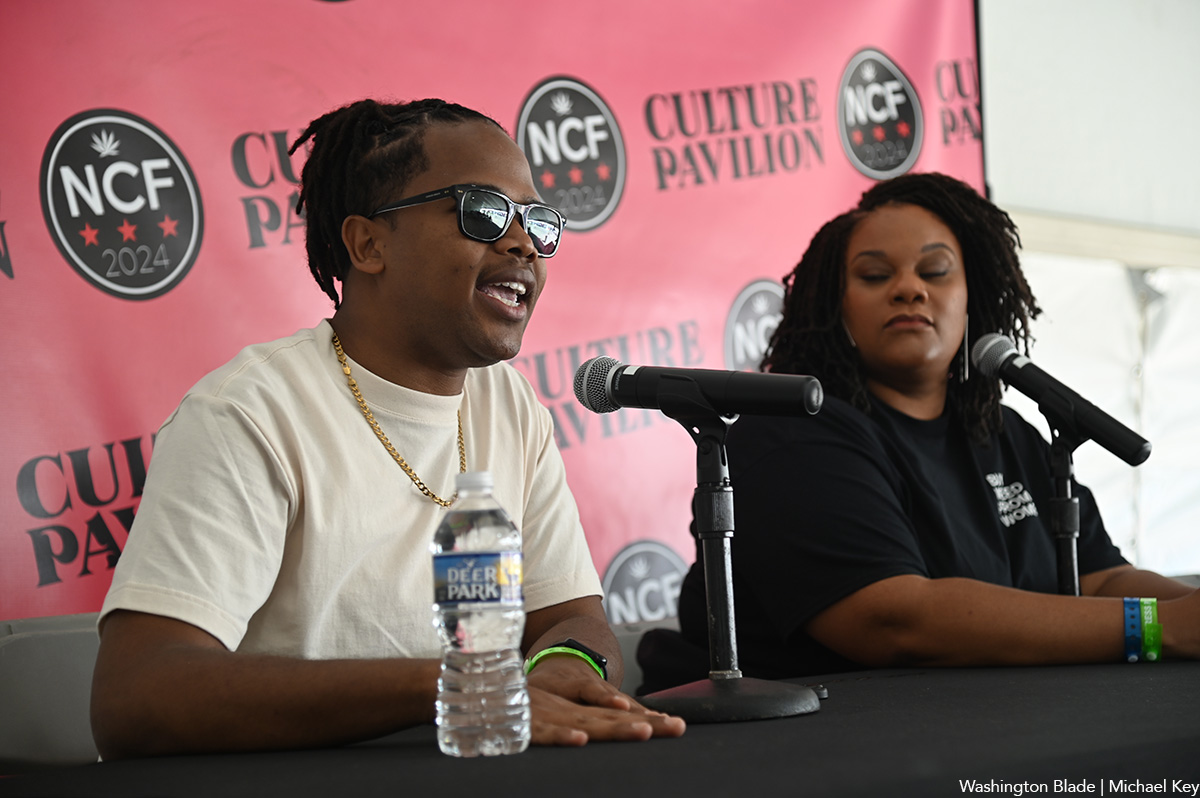
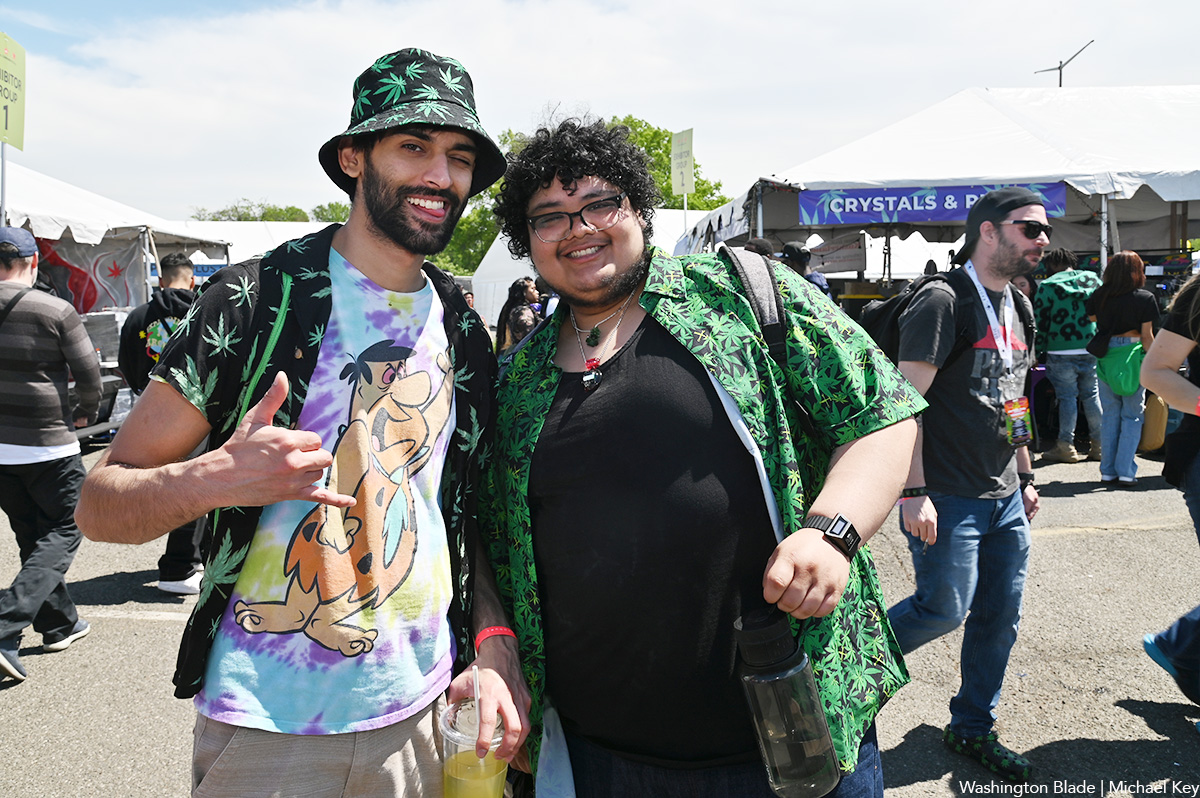

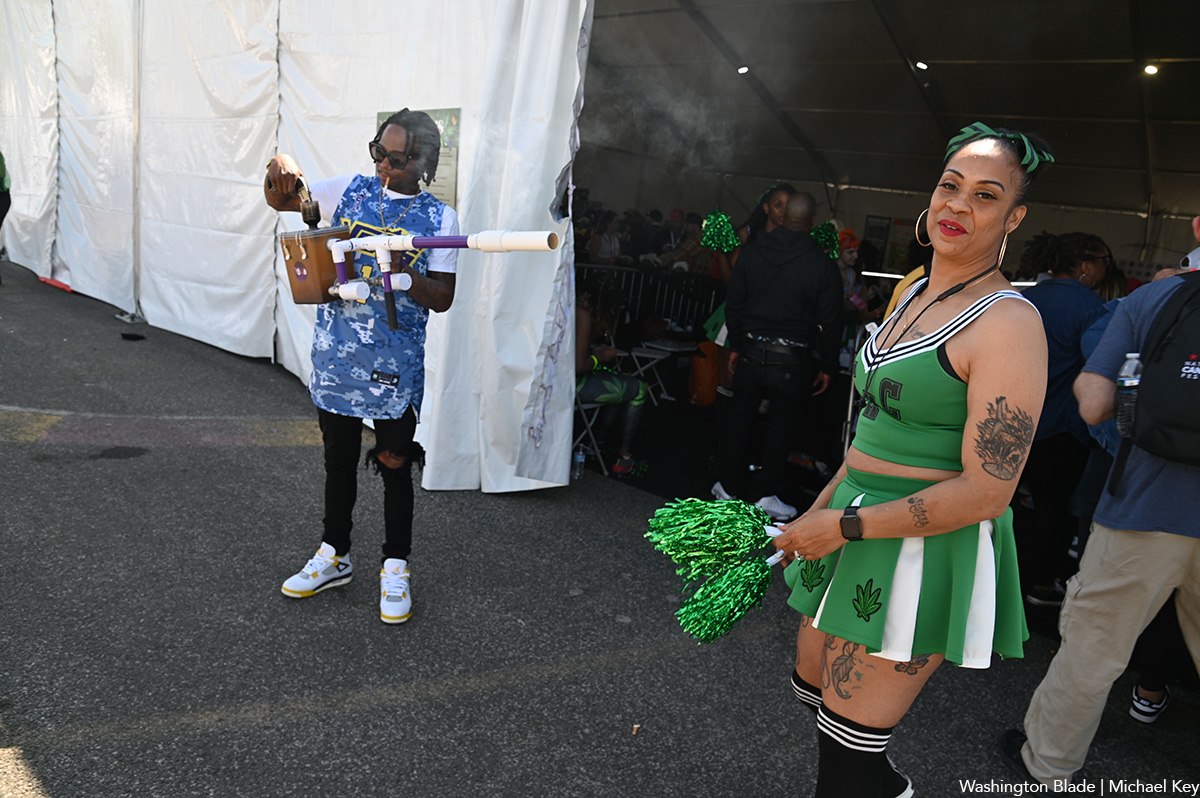

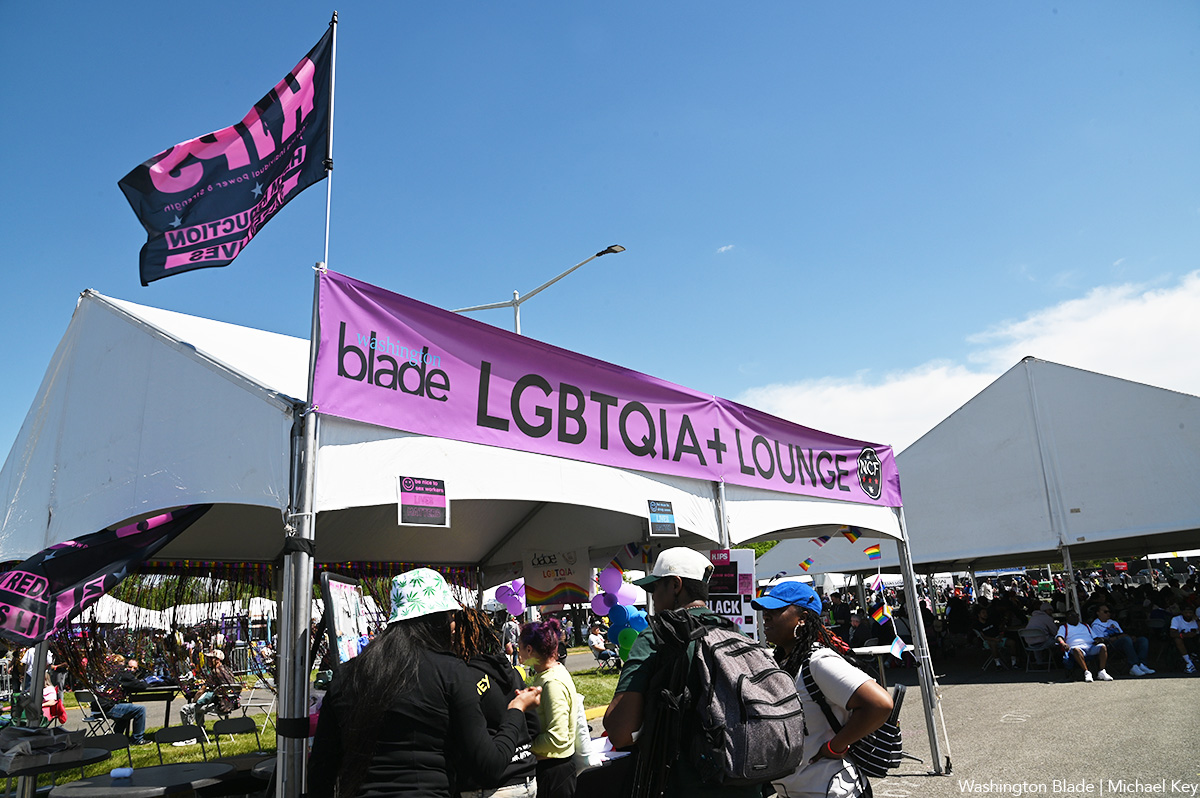
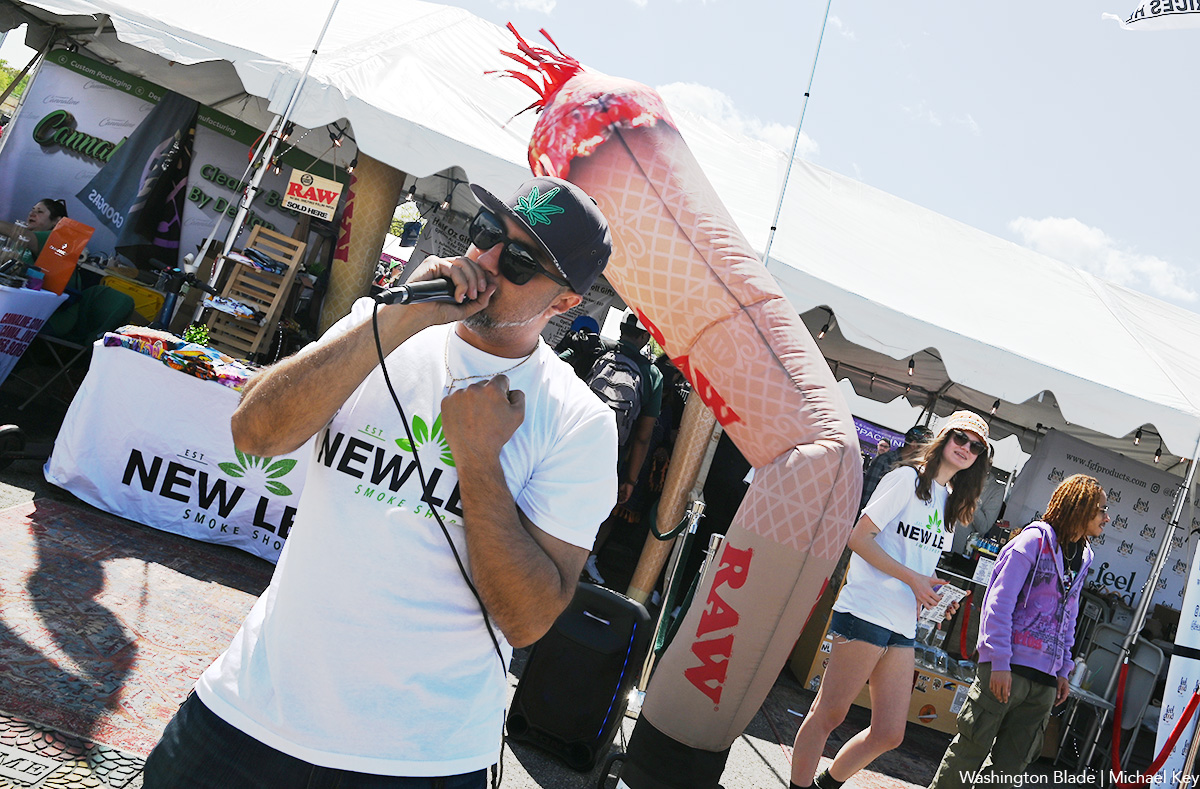
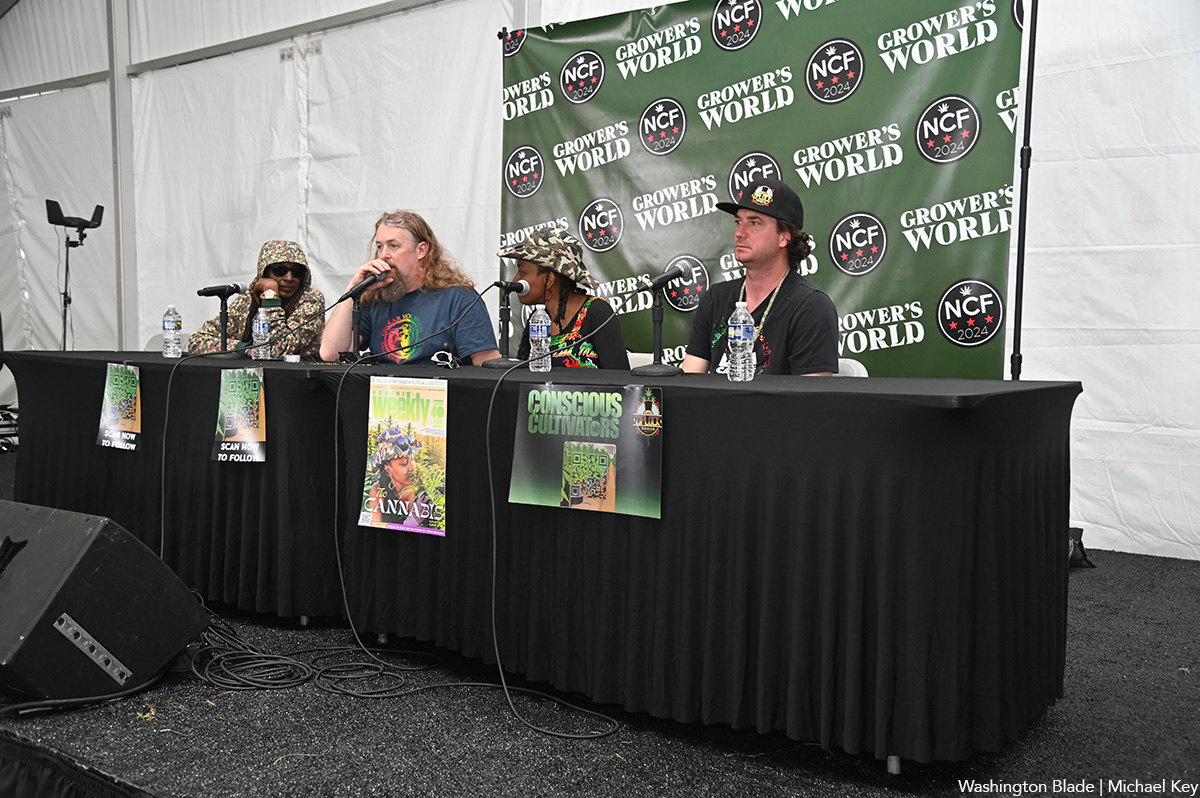
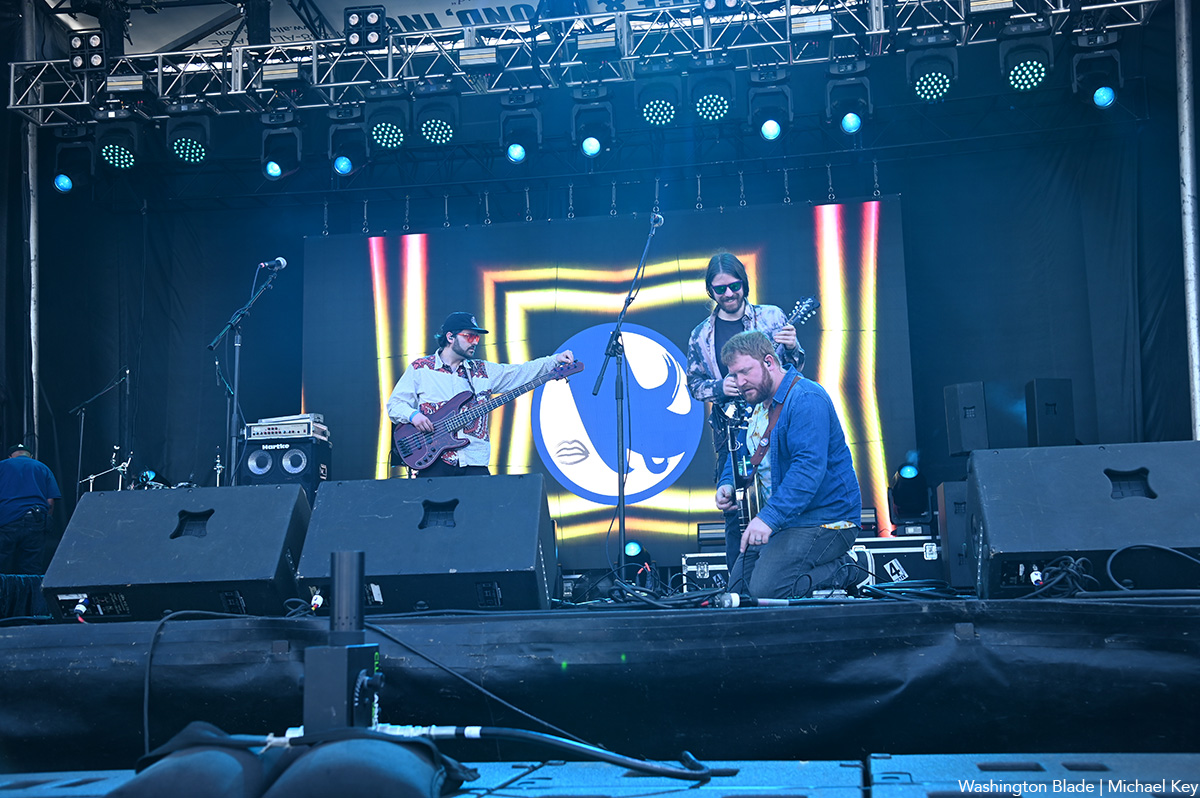
Covering the @NatlCannaFest at RFK Stadium for @WashBlade . Stop by the LGBTQ+ booth and pick up a paper if you are here. pic.twitter.com/is7hnsaPns
— Michael Patrick Key (@MichaelKeyWB) April 20, 2024
Theater
‘Amm(i)gone’ explores family, queerness, and faith
A ‘fully autobiographical’ work from out artist Adil Mansoor
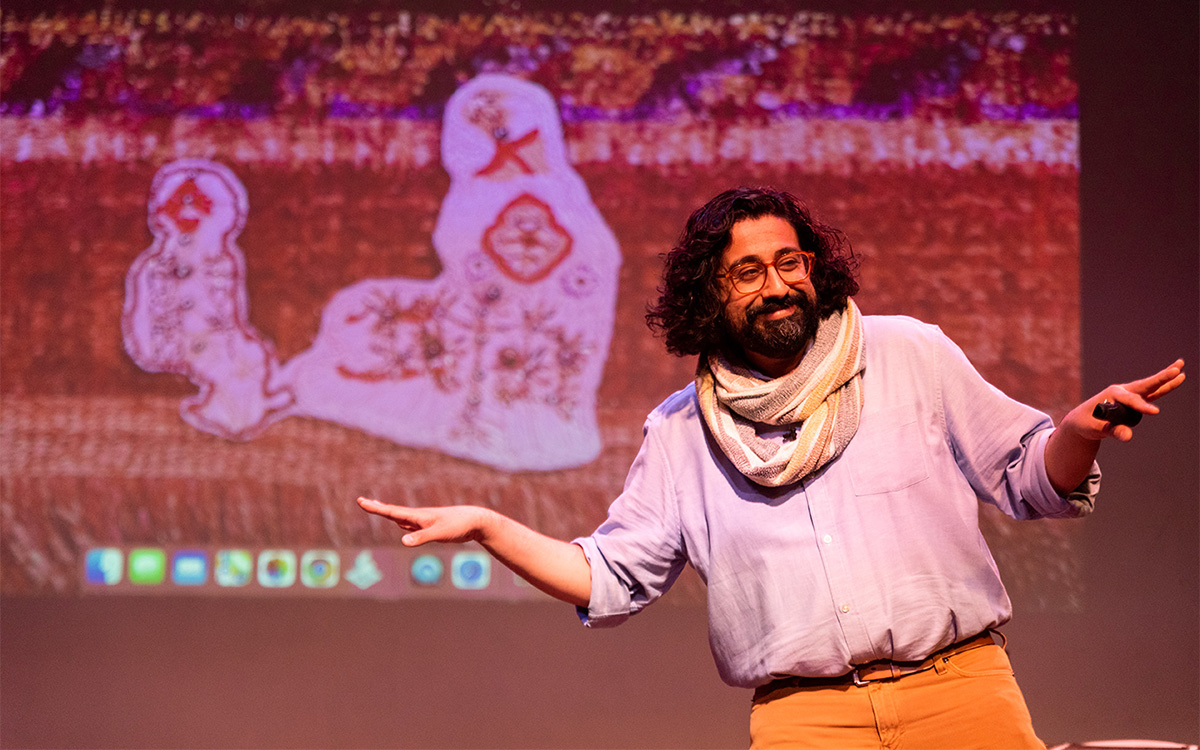
‘Amm(i)gone’
Thorough May 12
Woolly Mammoth Theatre
641 D St., N.W.
$60-$70
Woollymammoth.net
“Fully and utterly autobiographical.” That’s how Adil Mansoor describes “Amm(i)gone,” his one-man work currently playing at Woolly Mammoth Theatre.
Both created and performed by out artist Mansoor, it’s his story about inviting his Pakistani mother to translate Sophocles’s Greek tragedy “Antigone” into Urdu. Throughout the journey, there’s an exploration of family, queerness, and faith,as well as references to teachings from the Quran, and audio conversations with his Muslim mother.
Mansoor, 38, grew up in the suburbs of Chicago and is now based in Pittsburgh where he’s a busy theater maker. He’s also the founding member of Pittsburgh’s Hatch Arts Collective and the former artistic director of Dreams of Hope, an LGBTQ youth arts organization.
WASHINGTON BLADE: What spurred you to create “Amm(i)gone”?
ADIL MANSOOR: I was reading a translation of “Antigone” a few years back and found myself emotionally overwhelmed. A Theban princess buries her brother knowing it will cost her, her own life. It’s about a person for whom all aspirations are in the afterlife. And what does that do to the living when all of your hopes and dreams have to be reserved for the afterlife?
I found grant funding to pay my mom to do the translation. I wanted to engage in learning. I wanted to share theater but especially this ancient tragedy. My mother appreciated the characters were struggling between loving one another and their beliefs.
BLADE: Are you more director than actor?
MANSOOR: I’m primarily a director with an MFA in directing from Carnegie Mellon. I wrote, directed, and performed in this show, and had been working on it for four years. I’ve done different versions including Zoom. Woolly’s is a new production with the same team who’ve been involved since the beginning.
I love solo performance. I’ve produced and now teach solo performance and believe in its power. And I definitely lean toward “performance” and I haven’t “acted” since I was in college. I feel good on stage. I was a tour guide and do a lot of public speaking. I enjoy the attention.
BLADE: Describe your mom.
MANSOOR: My mom is a wonderfully devout Muslim, single mother, social worker who discovered my queerness on Google. And she prays for me.
She and I are similar, the way we look at things, the way we laugh. But different too. And those are among the questions I ask in this show. Our relationship is both beautiful and complicated.
BLADE: So, you weren’t exactly hiding your sexuality?
MANSOOR: In my mid-20s, I took time to talk with friends about our being queer with relation to our careers. My sexuality is essential to the work. As the artistic director at Dreams of Hope, part of the work was to model what it means to be public. If I’m in a room with queer and trans teenagers, part of what I’m doing is modeling queer adulthood. The way they see me in the world is part of what I’m putting out there. And I want that to be expansive and full.
So much of my work involves fundraising and being a face in schools. Being out is about making safe space for queer young folks.
BLADE: Have you encountered much Islamophobia?
MANSOOR: When 9/11 happened, I was a sophomore in high school, so yes. I faced a lot then and now. I’ve been egged on the street in the last four months. I see it in the classroom. It shows up in all sorts of ways.
BLADE: What prompted you to lead your creative life in Pittsburgh?
MANSOOR: I’ve been here for 14 years. I breathe with ease in Pittsburgh. The hills and the valleys and the rust of the city do something to me. It’s beautiful, it’ affordable, and there is support for local artists. There’s a lot of opportunity.
Still, the plan was to move to New York in September of 2020 but that was cancelled. Then the pandemic showed me that I could live in Pittsburgh and still have a nationally viable career.
BLADE: What are you trying to achieve with “Amm(i)gone”?
MANSOOR: What I’m sharing in the show is so very specific but I hear people from other backgrounds say I totally see my mom in that. My partner is Catholic and we share so much in relation to this.
I hope the work is embracing the fullness of queerness and how means so many things. And I hope the show makes audiences want to call their parents or squeeze their partners.
-

 South America4 days ago
South America4 days agoDaniel Zamudio murderer’s parole request denied
-

 Maryland4 days ago
Maryland4 days agoMontgomery County police chief discusses arrest of trans student charged with planned school shooting
-

 Commentary5 days ago
Commentary5 days agoWorld ‘isn’t much different today’
-

 Theater4 days ago
Theater4 days ago‘Amm(i)gone’ explores family, queerness, and faith

